Volkswagen Unveils Its Plug-in Hybrid AWD Cross Coupe Concept at the Tokyo Auto Show
by: Inhabitat , 2011-12-04 06:15:51 UTC

Volkswagen has just revealed its new plug-in hybrid AWD Cross Coupe Concept at the Tokyo Motor Show, and it displays the direction the company will be heading in its design for future vehicles. We love the raked angles that flow back to the unique taillights, but the really impressive design is under the hood, where VW has packed two electric motors paired with a direct-injected, turbocharged engine and a seven-speed dual-clutch transmission.



Read the rest of Volkswagen Unveils Its Plug-in Hybrid AWD Cross Coupe Concept at the Tokyo Auto Show
Permalink |
Add to
del.icio.us |
digg
Post tags: 2011 Tokyo Motor Show, alternative transportation, concept car, Cross Coupe Concept, electric car, electric vehicle, green automotive design, green car, green transportation, green vehicle, hybrid car, hybrid concept car, hybrid crossover, hybrid SUV, hybrid vehicle, plug-in hybrid, plug-in hybrid concept car, Tokyo auto show, tokyo motor show, volkswagen, Volkswagen AWD Cross Coupe Concept
Nissan Leaf Named Japan Car of the Year at Tokyo Motor Show
by: Inhabitat , 2011-12-05 15:24:18 UTC

The Nissan Leaf became the first 100% electric vehicle to be named the Japan Car of the Year for 2011-2012 on Friday at the Tokyo Motor Show. Nissan’s Leaf, which hit the roads in the US in December of 2010, was sold mostly in the US and Japan and as the Tokyo Motor Show recognized with this award, is the first mass-marketable all-electric vehicle to make it past the production phase and into thousands of homes. Check out the video interview with Nissan Chief Operating Officer Toshiyuki Shiga about the honor after the jump.






Read the rest of Nissan Leaf Named Japan Car of the Year at Tokyo Motor Show
Permalink |
Add to
del.icio.us |
digg
Post tags: 100 percent electric car, all electric automobile, all electric car, all electric leaf, automobile of the year, car of the year, electric automobile, electric vehicle technology, ev technology, first electric vehicle, japan car of the year, leaf, Nissan electric vehicle, Nissan Leaf, Tokyo auto show, tokyo motor show, vehicle of the year
Reinhard Dienes’ Dickens Bookshelf is Made Entirely from Recyclable Cardboard
by: Inhabitat , 2011-12-05 15:44:45 UTC

Reinhard Dienes is a cardboard design enthusiast who has turned the corrugated material into an inspired line of furniture. Dienes created his Dickens bookshelves from fully recyclable cardboard in 7 different colors. Lightweight and certainly strong, each colorful shelf has an edge strength of up to 190 lbs. This modern and eco-friendly storage solution will make beautiful addition to any home.
+ Reinhard Dienes
The article above was submitted to us by an Inhabitat reader. Want to see your story on Inhabitat? Send us a tip by following this link. Remember to follow our instructions carefully to boost your chances of being chosen for publishing!



Permalink |
Add to
del.icio.us |
digg
Post tags: "green furniture", cardboard design enthusiast, cardboard furniture, Dickens bookshelves, eco bookshelf, eco furniture, green design, Recyclable cardboard, Reinhard Dienes
Toyota, BMW join hands on green technology
by: Reuters: Green Business News, 2011-12-01 09:23:56 UTC
TOKYO/FRANKFURT (Reuters) - Toyota Motor Corp and BMW AG agreed on Thursday to join hands on a broad range of environmental technologies, forging a partnership between two engineering stalwarts in...
 Global industry CO2 output rising even in weak economy: study
Global industry CO2 output rising even in weak economy: study
by: Reuters: Green Business News, 2011-12-04 18:02:51 UTC
SINGAPORE (Reuters) - Global carbon dioxide emissions from industry rose about three percent in a weak global economy this year, a study released on Monday showed, adding fresh urgency to efforts to...
 Pneumatic Water Transport Piers harvests solar energy and rainwater
Pneumatic Water Transport Piers harvests solar energy and rainwater
by: The Design blog, 2011-12-04 05:39:53 UTC
Sourish Karmakar:
The concept
The Thessaloniki Water Transport piers in Greece won the national architecture design competition. It consists of four piers named as Eleutheria Square, Perea, Megaro and Aretsou. These are designed keeping in mind the three basics of having a floor, the inflated pneumatic structure and the pavilions. The primary criteria for this competition was to have a functional and economic, yet an innovative design. The images will surely tell you the majestic design of the piers.

Thessaloniki Piers Pavilion
The Inspiration
The floor is the base that supports the working staff. It also includes the base and control of the pier lighting and sitting. It is made of wood planks treated with tar, a technique used in shipbuilding to make it floating as well as water resistant. The woods are also rough, to support more air trapped inside. The sitting is built strong with stone blocks and the lighting is installed on the floor surface. The pavilion comprises of public toilets for visitors. The pavilion also has a ticket booth for commercial tourists and an exotic Pier café to cater the tourists. The pavilions are made of steel structures, which are covered with rough plants with tar. The door and windows of the pavilions are made of lighter alloy known as Brass. The Brass doors and windows are also very common in ship construction. The inflated air based structure has multi-role utility. It not only acts as weather protection, but also harness solar energy. It also collects the rainwater. The structure of the pneumatic inflated body is actually a combination of columns of steel holding a triangular ring inside the body. The surface of the body gets constant mechanical support with steady state flow of air. The sides are made of BoPET while the bottom side walls are of ETFE. These materials look elegant with their reflective and transparent nature respectively. However, these materials are known for the top line tensile strength capability.
Eco Credentials
The Inflated Pneumatic Structure harnesses both the solar energy and water. The mechanism is simple with solar radiation entering the inflated structure via the upper transparent ETFE walls. The reflective BoPET walls prevent light escape. It also reflects back the solar beams guiding it towards the solar cells in the interior of the structure. The solar cells convert the solar energy to electricity that is stored in series of batteries. The design is innovative compared to conventional designing of solar power harnessing. The design, being made of steel and glass, enhances ability for harnessing more power due to large surfaces. It also has minimal weight. Many solar power harnessing companies such as Cool Earth Solar, SunPeak Solar, Emcore and Ausra have collaborated with ETH University to design this incredible sustainable water piers. The water is collected from the upper wall via the three cone shaped point in the Inflated Pneumatic Structure. The water is then stored in an under Pier storage facility. Electricity and water harvesting make this design a sustainable as well as innovative design.
Feasibility
The piers do not have any waiting space for the tourists. Taking consideration of the mild weather of Thessaloniki, the average waiting time for users is been kept low. This is a good way to save temperature fluctuations during winter and summer. The reflective BoPET surface of the inflated pneumatic structure attaches itself to the piers in all the positions that can be seen. The three components of the design are unique everywhere in all the four mentioned piers. This feature helps in saving in term of design and fabrication. It also enables a pier to be used for any future innovative expansion of the ‘Thessaloniki Water Transport Piers’ in any of the locations. It also consolidates the whole structure as a single entity. The construction has been carried out to minimize the requirement of regular maintenance. These components do not have any hard error in terms of fixing. The components can be replaced in case of major damage. Being in vicinity of water, these components are made to resist excessive humidity, salt deposition. The components are also strengthened to resist from both natural and artificial emergency situations.
Picture Gallery
Thessaloniki Piers Pavilion
Related trends:
1. Green Energy Educational Pavillion

Green Energy Educational Pavillion
The Green Energy Educational Pavillion is a conceptual design by Amanda Tobin that is being implemented in slow phase manner. The pavilion multirole functions include the educational training given to the young kids, being completely sustainable in terms of energy harnessing. The design is proposed to run on clean green energy. The design harnesses the wind and solar energy with its photovoltaic solar cells. The design also has integrated windmills to harness the wind energy that will surely meet the energy needs of the design.
2. Solar Wind Pavilion

Solar Wind Pavilion
It is another experimental design that is a combination of beautiful designing and sustainable power generation. It is created by Michael Jantzen for the California State University. The design can harness solar and wind energy and will also collect rainwater. It will allow the operation of all the major equipment inside the facility. The design is always marked by the perfect blend of stunning architecture and ecological sustainability. It is proposed to be made of lighter version of composite concrete.
3. Wood Clad Canada Pavilion

Wood Clad Canada Pavilion
The water-harvesting wood-clad Canada Pavilion is another elegant design that supplied most of the major electrical needs on 2010 world expo in Shanghai. The design was to support the idea of having a sustainable energy development. It supported all the public performances and cultural programs during the expo. The design is made of wood coated with water resistant paint. The upper surface can harness the solar power that was stored in batteries that powered all the cultural function of the expo.


 Making Natural Gas from Sunlight
Making Natural Gas from Sunlight
by: Eco Geek Latest, 2011-12-01 20:07:24 UTC

Producing natural gas from wastewater and sunlight sounds like an idealized fuel production scenario, and that is just what a company called HyperSolar is claiming to be able to do.
Unlike many other companies making fuel using microorganisms, the HyperSolar process is designed to mimic photosynthesis with a nanomaterial. Hydrogen is produced at normal pressure, and then reacted with injected CO2 to produce methane.
Sunlight activates the nanomaterial particles and produces a charge which allows the particle to release hydrogen from the water. The process can even use untreated wastewater as a feedstock, and will produce clean water along with the natural gas.
This kind of natural gas would, of course, be preferable to fossil natural gas, since it would use already freed CO2 and leave the sequestered fossil carbon undisturbed. Moreover, it would serve as a source of natural gas without the need for controversial extraction methods like fracking.
Because the process takes place at normal pressure and temperature, it is less expensive than other systems that require large capital investments for the special equipment needed for their processes.
 Organic farmers defend EU's 'green revolution' (News)
Organic farmers defend EU's 'green revolution' (News)
by: Euractive, 2011-12-02 07:42:04 UTC
Outgunned by large industrial farm lobbying groups, organic producers, supported by conservation organisations, have risen up to defend some of the European Commission's proposals for a 'greener' Common Agricultural Policy (CAP).
More »
[TMS] Toyota Auto Body Revamps One-seater EV
by: Tech-On! : tech news - straight from Asia., 2011-12-04 02:40:00 UTC
Toyota Auto Body Co Ltd exhibited a single-seater electric vehicle (EV) to be released in the summer of 2012 at the 42nd Tokyo Motor Show 2011.
build your own custom robot at my robot nation
by: Designboom - Weblog, 2011-12-01 12:31:00 UTC
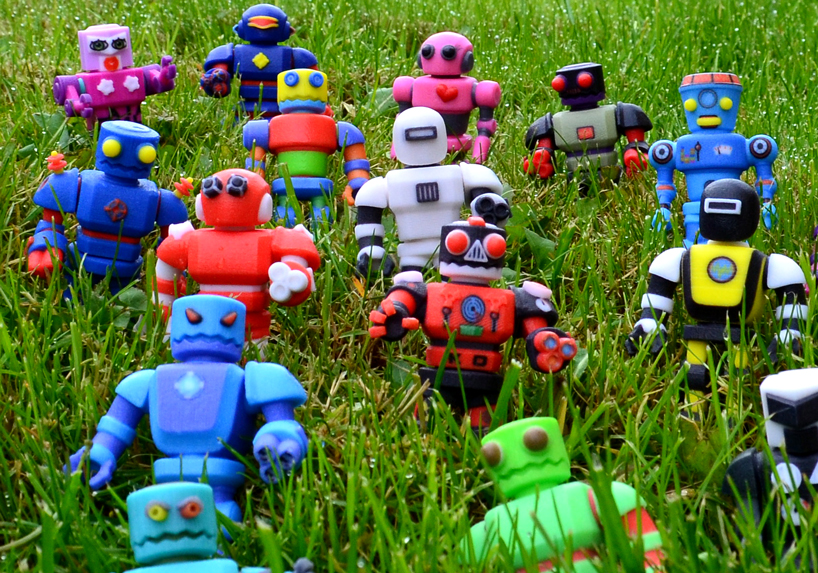
from buttons and circuits to bowties and tattoos, the website lets users customize their own miniature robot figurines, designable via an intuitive web interface and then 3D-printed and shipped to their destination.
read more

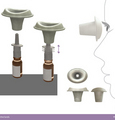
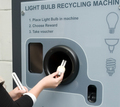

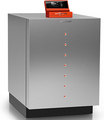



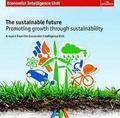
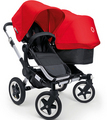
Comments by our Users
Be the first to write a comment for this item.